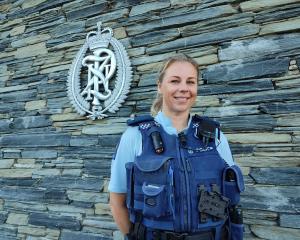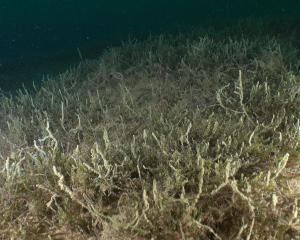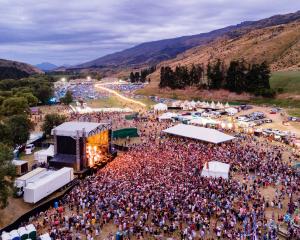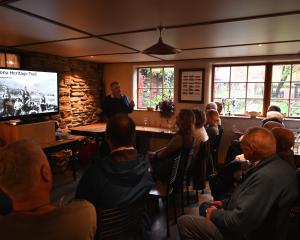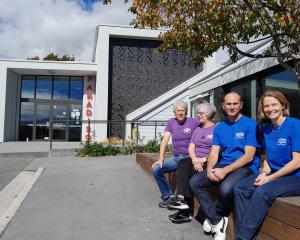A freshwater scientist believes heavy flooding last year could have helped reduce algae levels in Lake Wanaka.
Chris Arbuckle, who is also co-founder of Wanaka Lake Swimmers and the Touchstone project, is investigating where the weed, known as lake snow, has gone from around Ruby Island and questioning when it will return.
For the past three years, for six months from the end of October and on every alternate Friday, Mr Arbuckle has taken photos of the swimmers before and after their 2.5km swim around the island and measured how much of the Lindavia intermedia diatom had been caught on their skin.
For some reason, this year the waters around Ruby Island have been much clearer.
He believed it could be the result of the heavy rains and floods last December.
"The heavy rain put a lot of particulate matter into the lake, which seemed to have changed the prevalence of the diatom.
"My hypothesis or theory is that all that particulate settled on the mucous and sunk it down to the bottom of the lake.
"Unfortunately, it will still be there, but it is interesting that the water clarity has been a lot clearer than previously."
Swimmer Krystle Theunissen has been involved in the project from the beginning and said the colour of the lake water after the December floods was unlike anything she had seen before.
"Almost like Lake Tekapo."
For three years Mr Arbuckle has also sampled the water from three sites around Ruby Island and measured the clarity of the water at particular depths.
He has posted the data on the Touchstone website to provide information on the lake’s water quality and the patterns of lake snow in the part of the lake surrounding Ruby Island and widen the understanding about the future water quality challenges facing Lake Wanaka.
The Otago Regional Council contributed funding towards the project but has also approved the purchase of two new monitoring buoys for Lakes Wanaka and Wakatipu.
ORC scientist Hugo Borges said the two buoys were expected to be built by Limnotrack this year, but had been delayed as Covid-19 restricted the company’s ability to carry out tests.
The buoys would be deployed in the lakes by June next year.


